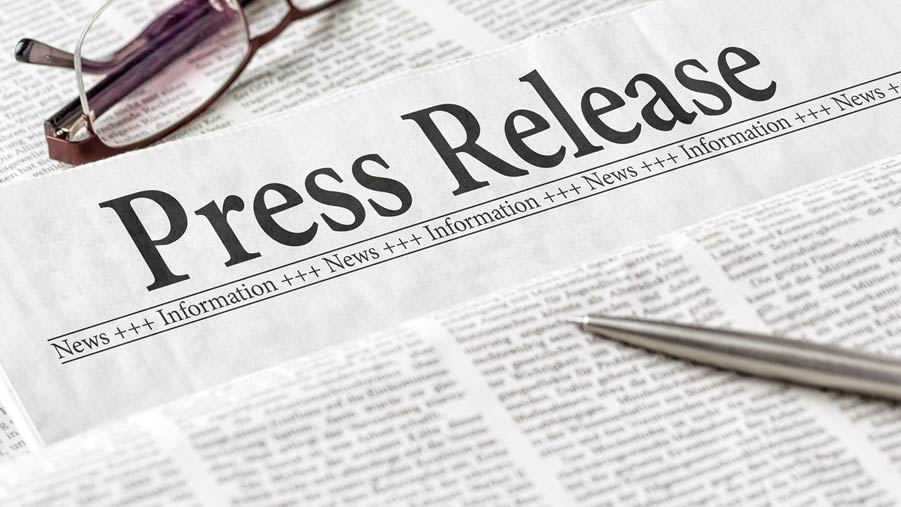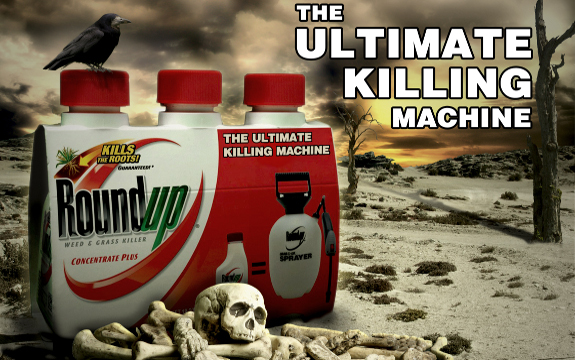
10 Valuable Tips on How to Write a Press Release (Or Media Release) That Will Get Noticed
Sometimes the devil can be in the details and a good press release is no exception. Businesses who work well with the media can literally become overnight sensations. Using a single TV interview, spate of radio spots or well-placed press publicity. Putting yourself in danger of having a stroke of good luck is the key.
Here are a few tips to help get your press release or media release noticed.
Press Release Tip 1. Get Your P.R. Strategy Together
News desks, editors and journalists are always pushed for time and up to their necks in potential stories. When your release arrives, it’s important that its eye-catching and communicates the importance of your story quickly and efficiently. This means creating a good headline and giving the most important information in the first paragraph. i.e. Who, What, When, Why, How?
Above everything else, make sure that your story is “newsworthy” as possible. There’s nothing that aggravates the press more than blatant plugs of people trying to sell their products. Especially using the media to do it by providing no valuable content. It’s a waste of their time, plus the toner in their fax machine to boot.
You have to be aware of the needs of the people in newsrooms and by really understanding the job people have to do, will give you an immediate head start over the competition.
Of course, everyone wants publicity and the relationship between commercial organisations and the media has always been mutually beneficial, but you should work to produce something that is interesting to read about. This will take more thought than simply talking about “how great your company is”.
Let’s look a fictional case study:
You have launched a new website for expectant mothers, added a discussion forum and an on-line shop to purchase baby goods. Your website has been moderately successful, but you want to send a press release to get some hardcore exposure for your site and its services.
So what to do?
The temptation is to title your release “Great New Aussie Site Launched for Pregnant Mums – Sign Up Now!”
Well that’s one way to kill your story and have it assigned to the garbage immediately.
Instead, think about why you started your website or created your product. If it was because you had a lonely pregnancy, use that as a foundation. It comes from your experiences and emotions and is therefore a subject matter that you know intimately.
Example Titles
One example would be to change your title to “Australian Mothers Frustrated By Constant Lack of Contact” or “Aussie Mums More Alone During Pregnancy than Ever” or even “Isolation Poses Growing Risk to Expectant Aussie Mums“.
In the release talk about the problems faced by women having their first baby, tackling and balancing work & family issues and WHY it’s different now than it used to be, I.E. The long hours their partners work, rising doctors waiting lists and rocketing fuel prices frequently mean mums-to-be are spending more time at home than talking to other people.
Does that fact that rising prices forces more women out to work affect mothers to be? Are more grandmothers still working then ever before so are unable to provide support during pregnancy? How are food prices affecting decisions on whether or not to breastfeed? Does any of the foregoing cause depression?
Let your thoughts and feelings be a part of your message. (If you are unsure of where to start, brainstorm a few ideas over a couple of glasses of wine with some friends then write all the ideas down. This tactic has been known to work many times)
And then?
Once you get the issues raised and the story bedded down, THEN you can mention how you created your site as a forum where women could chat to other women about their experiences and concerns. Talk about how women are able to open up with their on-line persona’s and talk frankly about things they’d normally never discuss with their own partners, mothers or doctors. If you have any interesting anecdotes or stories – mention them. If you have something really unusual, this may very well be good for a story in its own right I.E. A mother on the forum got some life-saving advice from another mum.
Opinions Can be Valid. Put a bit of research into your story and see if there’s corroborating information out there from experts that you can quote. (very often it’s OK to quote people under the terms of “fair use” as long as you don’t plagiarise their work). Just make sure to remember to credit where you got the information from.
Try to find and communicate the story and the “angle”. Be sure of your facts. If your release is an opinion piece, be prepared to take questions from journalists, especially if the subject matter is highly interesting or controversial.
Press Release Tip 2. Format Your Press Release Correctly
If you don’t want to get your story binned before it has a chance to be read, make sure you put Media Release or Press Release (in large letters) at the very top, or down the left-hand side of the page. When sending e-mails, ensure that you have “Media Release” and your headline in the subject.
If your release is to go out immediately, say “For Immediate Release”. If your release is for a specific date and time, either ensure your release is sent through the OzMedia system using the embargo feature or states “Embargo Until” with your date & time at the top of the page
Start the first paragraph, with your city and date I.E. “ Sydney, NSW, 25th October 2016”
For further media enquiries, ensure that the correct contact name and phone number are at the foot of the page.
Press Release Tip 3. How To Turn Your Media Release Into a P.R. Campaign
One thing that’s worth considering, is breaking up your media release into smaller distributions. This can be especially effective when you are on a budget and your message can potentially talk to a range of audiences or subject matters.
Therefore, If you have a $200 budget for PR that would normally target, say, women’s editor’s, men’s editors and radio stations, consider breaking it up into several smaller releases and giving minor re-writes. Then distribute the release to 4 x $50 lists instead of one $200 release.
For Example – Your company produces special gifts and has several gift ideas and specials that are suited to Valentine’s Day. Send something like :
To Men’s Magazine Editors: “Don’t stuff up Valentine’s Day by buying her cop-out presents such as flowers and chocolates. How to make her feel special on Valentines Day by using your imagination and a little flair.”
To Women’s Magazine Editors: “Afraid your man is going to stuff up Valentine’s Day again by buying you fattening chocolates and flowers that will aggravate your hay fever? How to drop the hint of your perfect gift so that he thinks it’s his idea.”
To radio : Send out your release with interview opportunities such as “Jane Doe, founder of My Pizzazz Gifts.com.au, spills the juice on how to get through the Valentines Day minefield without stuffing it up. Jane is available by telephone between hh:mm and hh:mm on …and will be available to discuss a range of topics on… etc.”
You might also want to think about sending another release the week before or after your main release and offering publications a limited number of product samples for giveaways or competitions in their magazines. While not strictly news, you can get some nice editorial space that you would normally pay a lot of money for if you were going through the advertising guys.
Press Release Tip 4. Silence is Golden
If it’s important that your release contains details about your company’s products and/or services, consider minimising the non-essential and un-newsworthy items contained in the main body of the release and instead put the information in an “About Us” section at the bottom of the release. This way the editor or journalist appreciates that you have kept clutter to a minimum and are “aware” of the ground rules.
Press Release Tip 5. Presentation & Images
You should resist the urge to “Pretty Up” your release with fancy fonts or graphics. This could be considered a sign that you have no content of value. If you have graphic material available, this can make your release more “newsworthy” and eye-catching, but try to find a balance.
If you have graphic material available, this can make your press release more “newsworthy” and eye-catching, but try to find a balance.
Ensure that your release states that additional material is available and if possible, provide a web address where the images can be downloaded from, as this will save time for the media organisation should they decide to publish your story.
Where delivery is by e-mail you can include low-resolution versions of images to give some immediate visual impact. Attaching high-resolution images is not a good idea.
Press Release Tip 6. Bold is Better
You can play it safe with media, but from experience, the best coverage comes from the releases that have the biggest and boldest headlines. Don’t be afraid to be controversial. Don’t be afraid to say it how it is. Above all, don’t be afraid to really put yourself out on a limb. If you feel that you might be cutting a bit close-to-the-bone, that you want to take some legal advice, then you might be getting close to a terrific of a story 🙂
Press Release Tip 7. Timing Your Press Release
It’s definitely not an exact science, but generally, releases should be sent to a radio or TV stations at around 4 am if they are to make breakfast news. Sometimes if your story has a few different angles, or you want it to develop throughout the day, you can send one release first thing, and then another one a few hours later. This is used to great effect. Even sending the same release at 4am and then 9am ensures that someone on a different shift at the news desk (again, this is radio and TV) will see it before it gets deleted.
If you want to get an expert to talk about a product on radio or TV (radio is generally easier) then a great technique is to send out a release marked ‘interview opportunity’ a week before the expert is available. Always put a time frame (eg: 6am until 9am) otherwise your expert will be hanging around all day. Then on the “day” the interview(s) are to take place, send out another release saying that “so and so” is being interviewed about “such and such”.
One of the biggest P.R. companies in Sydney used this technique on a regular basis for a large pharmaceutical company to publicise various health issues. The subtext is, of course, the products are great, but advertising restrictions prevent them from doing that directly – that is where P.R. comes in.
Newspapers are a different beast as deadlines are usually around 6-7pm the night before unless the news is absolutely astounding, in which case material at late as 11pm might make it into the next day’s paper. For events, in general, it is almost just as important to send a release before as well as after the event, as long as you don’t leave it too long. That way the story has a chance to develop and you might get more copy written about your issue.
Press Release Tip 8. Topical Press Releases
Under the banner of newsworthiness, it’s also worth mentioning that using a current issue to make your issue/ organisation/ product relevant is always a good move. If a story is ‘hot’ then something attached to it will be ‘warm’ as a result. An example of this might be when anti-smoking legislation comes in banning smoking in all indoor venues, and there is a bit of media hype about it, Nicotine patch manufacturers might do a campaign mentioning how their product could be used to stave off the grumps.
Press Release Tip 9. Size is Important
The best size for a media release is to fit on a single sheet of A4 and not be cluttered. Some media releases can go to 2 pages, but should rarely be any bigger. Include any company or biographical information in an “About” section at the bottom of your release, but try and keep it clear and simple.
Press Release Tip 10. Media Release Frequency
As with any other marketing medium and P.R., it’s important to not expect the earth from a single press release. If you don’t get any bites from a story, it could be that the angle didn’t quite catch or that the day your release went out there were other stories or news items that eclipsed yours.
Media can also be very cumulative in its effect. That is to say, the more often your stories and ideas are seen the more chance you have of being published, because there is a must greater chance that you will be perceived to be a) more persistent, b) a source of regular material, and c) you know the media game well enough to have not given up after your 1st release.
That last point is probably the most important. Companies who work well with the media can literally become overnight sensations from a single TV interview, spate of radio spots or well-placed press publicity. The press can give you exposure that advertising money can’t buy. Just use your imagination and get a good story out there, regularly.
Disclaimer: Information provided on this page is for educational and discussion purposes only and should not be relied upon by any party. Use or reliance in any way shape or form of any information in this document is at your sole risk and discretion.


